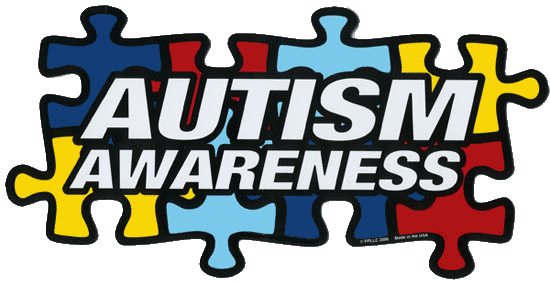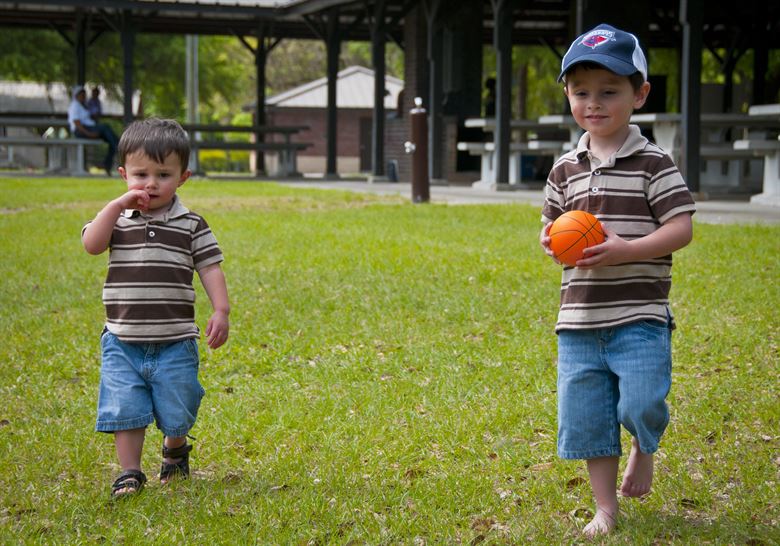Difference Between Autism and Speech Delay
What is Autism?
Autism is a developmental disorder characterized by:
- Problems with communication;
- Problems with social interaction;
- Repetitive behavior;
- Behavioral restrictions.

Children with autism have a violation of the social interactions. They are not able to manage their social contacts through a verbal or a non-verbal behavior.
Children with autism are not able to establish relationships and show a lack of interest in peers and friendship. They may feel scared, be overwhelmed, or cry in situations typically enjoyed by children, like visiting a play area with other kids.
Children with autism do not socially or emotionally attach to others. They do not share interests or feelings with other people. Most children may hesitate to interact with strangers, but after a short time develop a relationship and interact better. On the other hand children with autism struggle with relating even to familiar people.
Children with autism have equal difficulties in producing and understanding speech. Speech is absent or incomprehensible to others. The lack of speech is not compensated through mimic or gestures. They use stereotypical, repetitive, peculiar expressions, neologism, echolalia, and often speak their thoughts aloud.
Sign of autism are recurring, stereotypical, unusual actions or narrowly restricted special interests (rituals, fixed observation of moving objects, etc.), stereotypical and repetitive movements (rotation of the fingers in front of the eyes, swinging on a chair, etc.). Children with autism may also have an unusual interest in aspects of the senses (fixation to a specific smell, taste or touches).
Children with autism may have sleep problems and may need much less sleep than the other kids at the same age. They are more likely to develop neurological problems such as seizures, heightened sensitivity to light, touch or sound. Children with autism often experience gastrointestinal problems, like diarrhea and constipation.

What is Speech Delay?
Speech delay is a delay in the use or the development of the mechanisms, producing speech. The children with speech delay have difficulties producing speech, but their abilities to understand are similar to those of the other kids at their age. Children with speech delay are able to communicate through non-verbal behavior (social smile, mimic, visual contact). They are able to establish relationships and show interest in peers and friendship. Speech delay does not correlate with sleep problems, neurological problems, stereotypical, repetitive, peculiar expressions and behavior, gastrointestinal problems, or longer toe-walking.
Every child develops individually and not all children start speaking at the same age. However, in speech therapy, there are certain milestones for the development of the speech apparatus:
- The first 6 months – babies start using their voices to relate to the surrounding world by cooing, babbling, etc.
- From 6 to 12 months – the passive phase is predominant, babies begin to string sounds together, make attempts to imitate animals, say words like “mama” and “dada”, use different tones of speech.
- From 12 to 18 months – there is a wide range of speech sounds in the child’s babbling (like b, m, p, d, n). At this age, the children imitate sounds and words, learn few more words and are able to follow simple one-step directions.
- From 12 to 18 months – at this age children use about 20 words.
- From 18 to 24 months – the actively used words are 50 or more, children are able to combine two–three words in simple sentences.
- From 2 to 3 years – The child’s vocabulary increases, she/he combines more than three words into sentences, uses plural and pronouns, attempts to distinguish tenses (present, past).
Some children start talking later than the others and/or are lagging behind their peers in speech development. The reasons for speech delay in otherwise normally developing child can be the following:
1. Hereditary factors.
2. The nerve system of the child may be overloaded with different stimuli. This may lead to the prioritization of the stimuli, resulting in speech delay.
3. Lacking or underdeveloped phonematic hearing.
4. Maxillofacial trauma – if some of the speech organs are more cumbersome (lazy, difficult to move) or underdeveloped, it is also a prerequisite for speech delay.
5. Abnormal position of the teeth.
Recognizing and treating speech delays early is of crucial importance. In most cases, with a proper therapy and time, a child with speech delay will improve her/his ability to communicate.
Difference Between Autism and Speech Delay
-
Definition
Autism: Autism is a developmental disorder characterized by troubles with communication and social interaction, repetitive behavior, and behavioral restrictions.
Speech Delay: Speech delay is a delay in the use or the development of the mechanisms, producing speech.
-
Social Interactions
Autism: Children with autism have a violation of the social interactions. They are not able to manage their social contacts through a verbal or a non-verbal (social smile, mimic, visual contact) behavior
Speech Delay: Children with speech delay are able to communicate through non-verbal behavior. They are able to establish relationships and show interest in peers and friendship.
-
Speech Difficulties
Autism: Children with autism have equal difficulties in producing and understanding speech.
Speech Delay: Children with speech delay have difficulties in producing speech, but are able to understand it.
-
Speech Compensation
Autism: The lack of speech is not compensated through mimic or gestures.
Speech Delay: Children with speech delay compensate lack of speech through non-verbal behavior.
-
Atypical Behavior
Autism: Recurring, stereotypical, unusual actions or narrowly restricted special interests, stereotypical and repetitive movements, unusual interest in aspects of the senses.
Speech Delay: Children with speech delay do not show other atypical behavior.
-
Other Problems
Autism: Children with autism have sleep problems, neurological problems, stereotypical, repetitive, peculiar expressions and behavior, gastrointestinal problems, longer toe-walking.
Speech Delay: Speech delay does not necessarily correlate with other problems.
Autism Vs. Speech Delay

Summary of Autism Vs. Speech Delay
- Autism is a developmental disorder characterized by troubles with communication and social interaction, repetitive behavior, and behavioral restrictions.
- Speech delay is a delay in the use or the development of the mechanisms, producing speech.
- Children with autism have a violation of the social interactions and are not able to manage their social contacts through a verbal or a non-verbal behavior. Children with speech delay are able to communicate through non-verbal behavior; they establish relationships and show interest in peers and friendship.
- Children with autism have equal difficulties in producing and understanding speech, while children with speech delay have difficulties in producing speech, but are able to understand it.
- Children with speech delay compensate lack of speech through non-verbal behavior, while the children with autism don’t compensate it.
- Typical for the children with autism are the recurring, stereotypical, unusual actions or narrowly restricted special interests, stereotypical and repetitive movements, unusual interest in aspects of the senses. Children with speech delay do not show other atypical behavior.
- Children with autism have sleep problems, neurological problems, stereotypical, repetitive, peculiar expressions and behavior, gastrointestinal problems, longer toe-walking. Speech delay does not necessarily correlate with other problems.
- Difference Between Gallstones and Cholecystitis - September 5, 2021
- Difference Between Constipation and Cramping - August 4, 2021
- Difference Between Whole Genome Sequencing and Microarray - May 6, 2021
Search DifferenceBetween.net :
1 Comment
Leave a Response
References :
[0]Image credit: https://www.flickr.com/photos/57570482@N06/5298663895
[1]Image credit: https://media.defense.gov/2016/Apr/20/2001518625/780/780/0/200416-F-EX708-003.JPG
[2]Barbera M., T. Rasmussen. The Verbal Behavior Approach. London: Jessica Kingsley Publishers. 2007. Print.
[3]Sowell, T. Late-Talking Children, New York: Basic Books. 1998. Print.
[4]Wing, L. Autistic Children: A Guide for Parents and Professionals. Psychology Press. 1985. Print.

Thank you!!!!! Great website